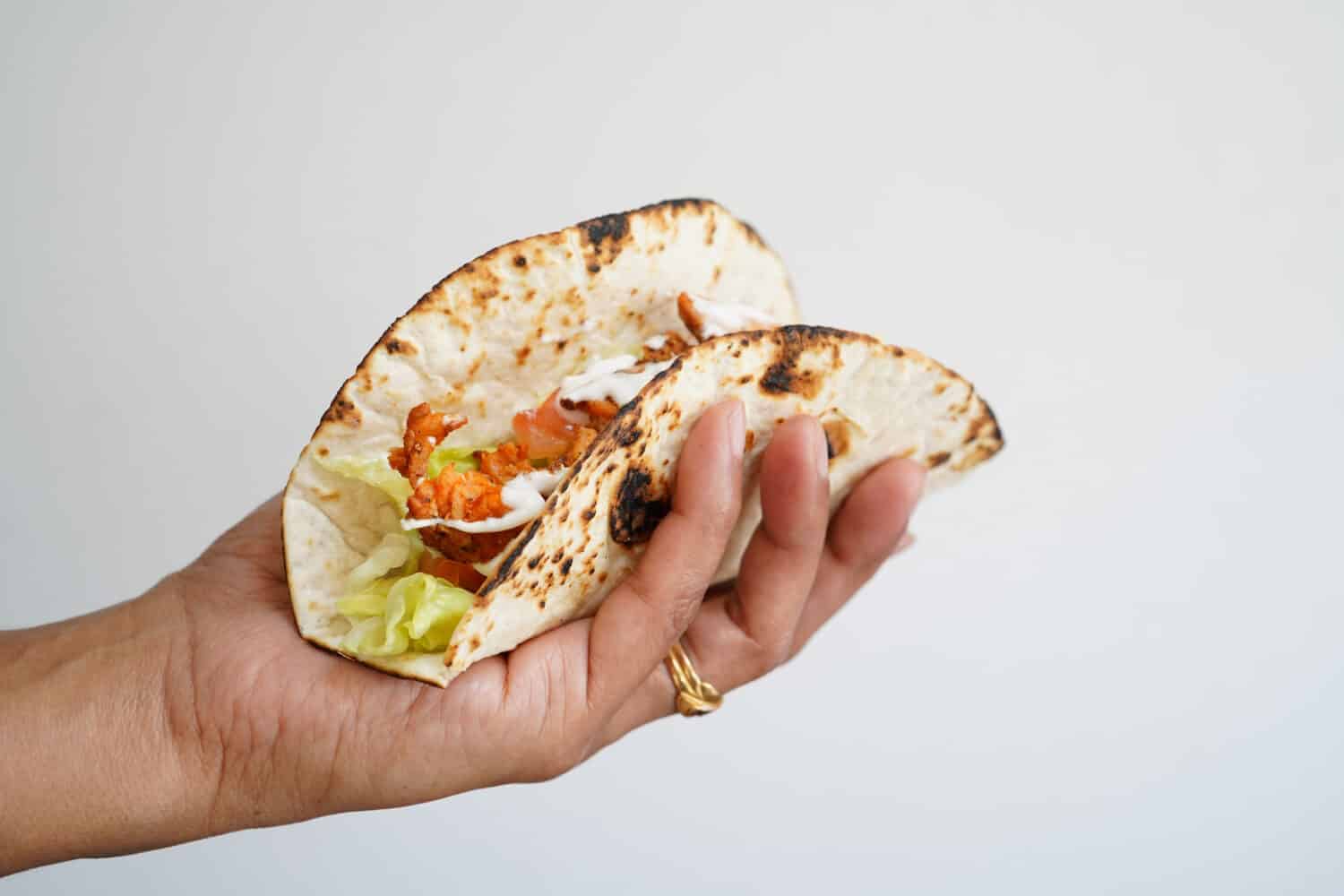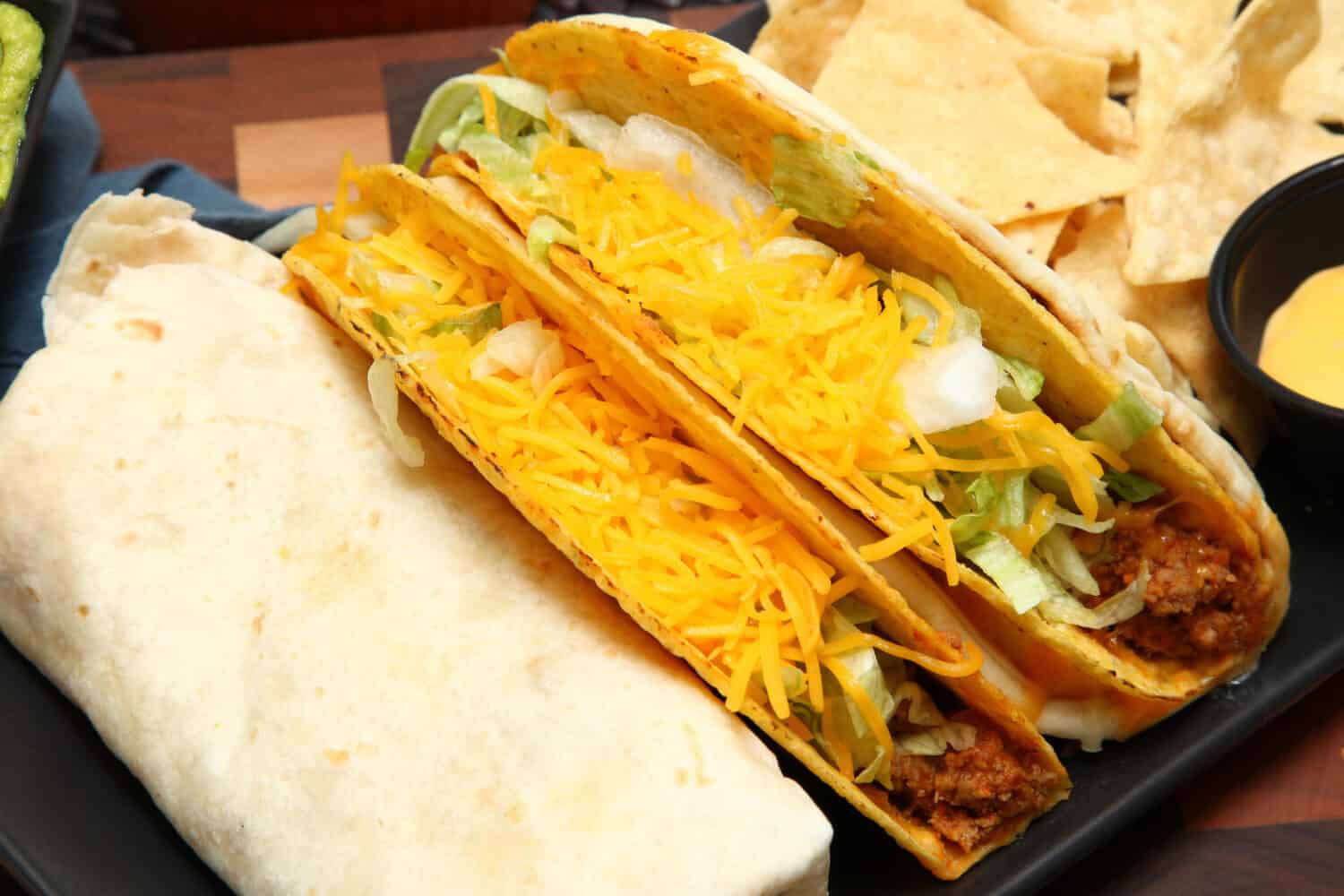When you think of Taco Bell, “healthy” may not be the first word that comes to mind. But let’s take a closer look at the health profile of the fast food chain overall. When asking the question, “Is Taco Bell actually healthy,” it’s best to break down the menu offerings. Taco Bell is commonly associated with other fast-food chains. However, in recent years, they’ve actually taken steps to eliminate artificial ingredients, reduce sodium, and increase their healthy meal options. According to Good Housekeeping, they even have a registered dietitian on staff, which helps them to make healthier choices in terms of their ingredient choices.
So, read on to learn more about the history of the Taco Bell food chain. We’ll take a closer look at the healthiest options on the menu. We’ll also look at which ones to avoid if you’re hoping to stay healthy. And, the fact is that Taco Bell options are often customizable! This makes the potential for eating healthy at Taco Bell, that much more possible. Is Taco Bell actually healthy? Stick around to find out as we do a deep dive into this delicious fast-food chain restaurant.
The History of Taco Bell
Taco Bell was actually inspired by a traditional Mexican cafe based in San Bernadino, California. Started in 1937, Mitla Cafe, the first U.S.-based cafe to sell hard-shell tacos, was introduced to the community. Right off Route 66, this place garnered a loyal customer base. The cafe was a well-established part of the community. And, around 1951, one of its frequent customers, a man by the name of Glenn Bell, had the brilliant idea to mass-produce hardshell tacos and sell them on the cheap. Bell modeled this future chain similarly to McDonald's which opened just a few miles from Mitla Cafe. Who would've guessed that Taco Bell would become a McDonald's competitor in the fast food market (via BBC).
Bell would open “Bell's Drive-In,” and “Taco Tia,” before starting the plans for Taco Bell in the mid-1950s. The first Taco Bell opened in 1964 in Downy, California, and it immediately began to franchise. By the '70s it had 325 restaurants, which was doubled by '78. Taco Bell continued to expand its menu offerings well into the '90s. The rest is history. Taco Bell continues to flourish in the fast food scene, now offering mobile ordering, rewards programs, and all kinds of customizations (via Taco Bell).
Healthy Food Options At Taco Bell
To understand if Taco Bell is actually healthy, we have to look at the updated menu options. With a registered dietitian on board, there are quite a few suggestions for healthy menu items.

©vm2002/Shutterstock.com
Healthy Recommendations
Some of the most popular options include the power bowls. These can be vegetarian or meat-based and come with veggies, rice, sour cream, guacamole, and your choice of protein. The vegetarian version has around 420 calories, 13 grams of protein, and 20 grams of fat. With this meal, you'll get 10 grams of fiber, 47 grams of carbohydrates, and 870 mg of sodium. The chicken version clocks slightly higher at 460 calories, 27 grams of protein, and 21 grams of fat. It has 8 grams of fiber and 1250 mg of sodium.
The crunchy tacos are a great option. You can either have those with just beans, or with grilled chicken. Be sure to add some vegetables or a side of guacamole. The veggie version has around 130 calories while adding grilled chicken ups it to 180 calories per serving.
Try the spicy potato soft taco with 240 calories, and 28 grams of carbohydrates. This meal has 12 grams of fat, 2 grams of fiber, 480 mg of sodium, and 5 grams of protein. If you're leaning away from the tacos, several burrito options are healthy choices and quite delicious as well. Try the cheesy bean and rice burrito, a classic bean (pinto, or black), or the seven-layer burrito (via Shape).
Healthline recommends the black bean quesalupa, which will deliver a higher fat content, but is a great option for keto-dieters, or as a still healthy, fattier treat. It comes with cheese in a chewy shell, black beans, sour cream, lettuce, and tomatoes. It has 590 calories, 22 grams of protein, 51 grams of carbohydrates, 870 mg of sodium, and 9 grams of fiber.
Nutritional Breakdown of Taco Bell
In general, a good way to modify the Taco Bell offerings with health in mind is to add in protein (meat or bean-based), forgo the sour cream for more vegetables, add guacamole, and pass on any of their dessert options. Taco Bell introduced a nutrition calculator on their website, which can really help you to stay health-conscious while ordering.
A comparison study of Taco Bell to other fast food chains found that Taco Bell meals generally have fewer calories than McDonald's meals. Towards Data Science also compared sodium levels in these competing food chains, and found that Taco Bell usually stays within the recommended sodium intake (2,300 mg/day). McDonald's menu items were found to contain much more sodium.
What Not To Order
The reason it's hard to say that Taco Bell is super healthy is because not everything on the menu is considered that healthy. While many things are customizable and there are plenty of healthy options, there are also some menu items that just can't really be made healthier. While very tasty, some of these menu items should absolutely be consumed in moderation, or avoided altogether if health is goal.
Unhealthy Menu Items
Parade mentions the steak grilled cheese burrito, which is blacklisted by dietitians because it contains a whopping 38 grams of fat, 63 grams of carbohydrates, and some 730 calories for just one burrito. The XXL Grilled Stuft Burrito has even more calories with 870 per burrito (via Business Insider).
And while the Taco Bell Crunchwrap Supreme is one of this chain's most popular menu items, it is not actually very healthy. According to Eat This Not That, the Crunchwrap Supreme has some 540 calories, but the real shocker is the 1,210 mg of sodium, which is over half of the recommended daily intake for sodium! The same applies to the Crunch Wrap Sausage: breakfast edition, which is also high in calories and sodium content. Watch out for any of their deluxe dipping boxes, which can have over a thousand calories, and, as mentioned above, the Taco Bell desserts are also not a very healthy choice.
Even with a dietitian on board, the Taco Bell menu expanded to include the Doritos Locos Taco, a Waffle Taco (discontinued), and XL, cheesier versions of their nachos and Quesalupa. The fact that the menu offers items with a high calorie, sodium, fat, and carbohydrate count isn't new news. But the efforts Taco Bell is making to expand their more nutritional and customizable options may really set them apart.
In Summary: Is Taco Bell Actually Healthy?
So, is Taco Bell Actually Healthy? Well, there are two parts to the answer. The first part is that compared to other fast food chains, Taco Bell is healthier. However, it is still a kind of food that should be consumed in moderation, or customized thoughtfully to align with healthier goals. The second fact is that, as a brand, they are trying to meet the standards for healthier fare, offering substitutions, and getting direct advice from on-staff dietitians. They are consistently releasing new products and helpful features like the nutrition calculator on their website. If effort was the measure of success, Taco Bell is doing well. While no fast-food chain is all healthy, Taco Bell does try its best to offer its customers some healthy options.
The image featured at the top of this post is ©Ixepop/Shutterstock.com.
